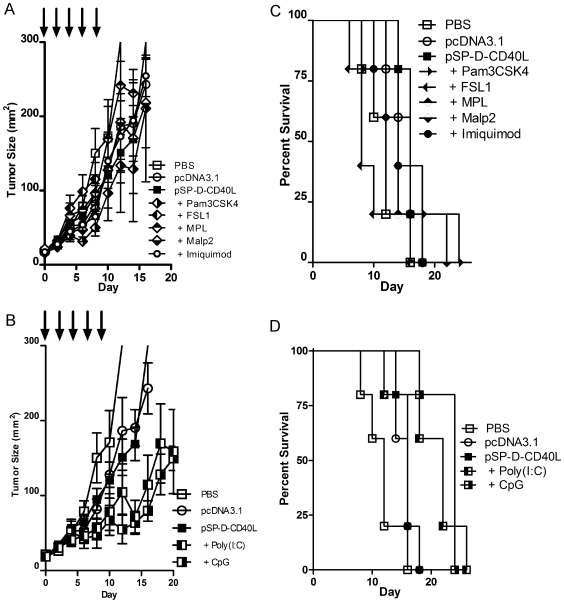Figure 2. A screen of TLR agonists showed that CpG and poly(I:C) had additional antitumor effects when combined with 4-trimer CD40L plasmid DNA.
Panels A and B – The combination of 4-trimer pSP-D-CD40L with CpG or poly(I:C), but not other TLR agonists tested, slowed the growth of established B16F10 tumors. As before, tumors that were ≥4 mm in diameter were injected with pSP-D-CD40L in combination with selected TLR agonists every other day X 5 (arrows). There were no apparent additive effects of Pam3CSK4 (TLR1/2), Malp2 (TLR2/6), FSL1 (TLR2/6), MPL (TLR4), and imiquimod (TLR7) (Panel A, mean±SEM, n = 5). The addition of poly(I:C) (TLR3) to pSP-D-CD40L showed a significantly stronger effect on tumor growth than pSP-D-CD40L alone from day 14 (Panel B, p<0.05 by Student's t test). CpG was clearly active when added to pSP-D-CD40L as compared to pSP-D-CD40L alone from day 14 (Panel B, p<0.01 by Student's t test). Panels C and D – The addition of CpG to pSP-D-CD40L resulted in a further survival benefit for mice with established B16F10 tumors. As expected from the tumor growth data, there was no increase in survival when Pam3CSK4, Malp2, FSL1, MPL, or imiquimod were added to pSP-D-CD40L treatment (Panel C). While the addition of poly(I:C) to pSP-D-CD40L showed a trend toward improved survival, this was not statistically significant when compared to pSP-D-CD40L alone (Panel D). In contrast, the addition of CpG to pSP-D-CD40L showed a clear survival benefit when compared to pSP-D-CD40L alone (Panel D, p<0.01 by log-rank test).

